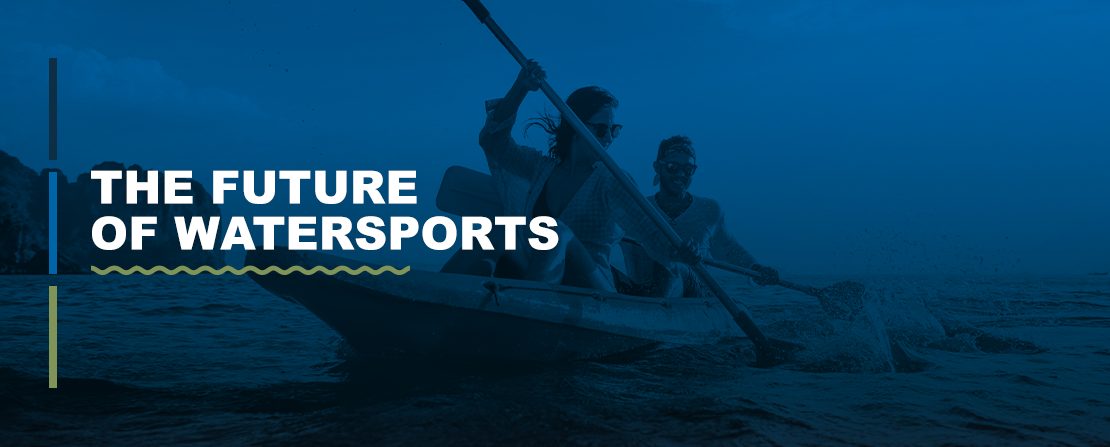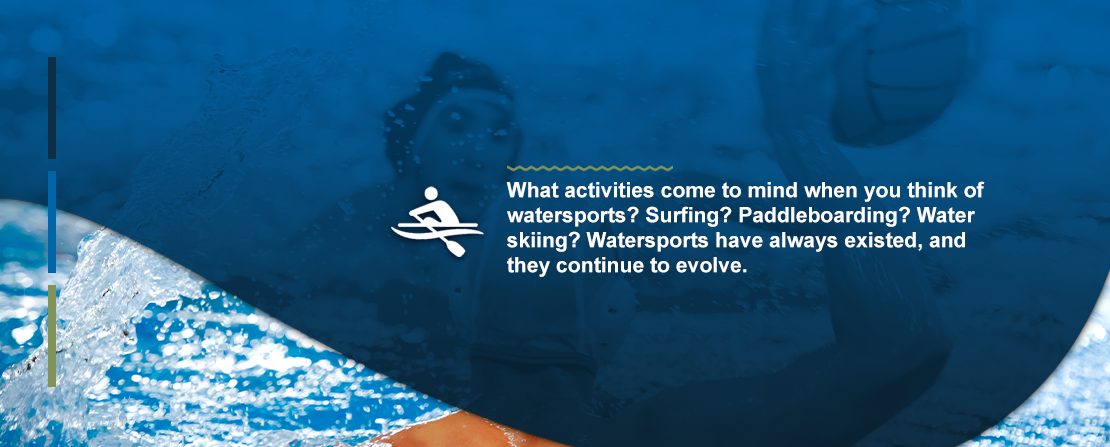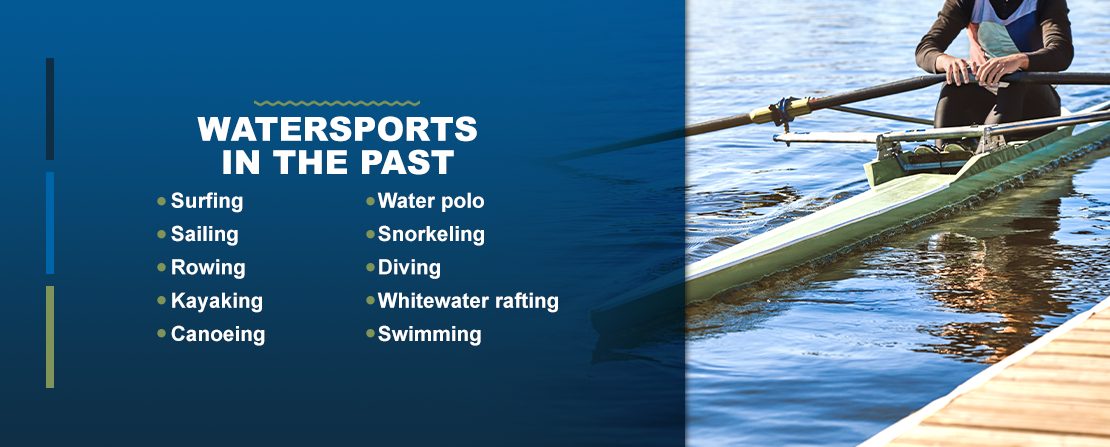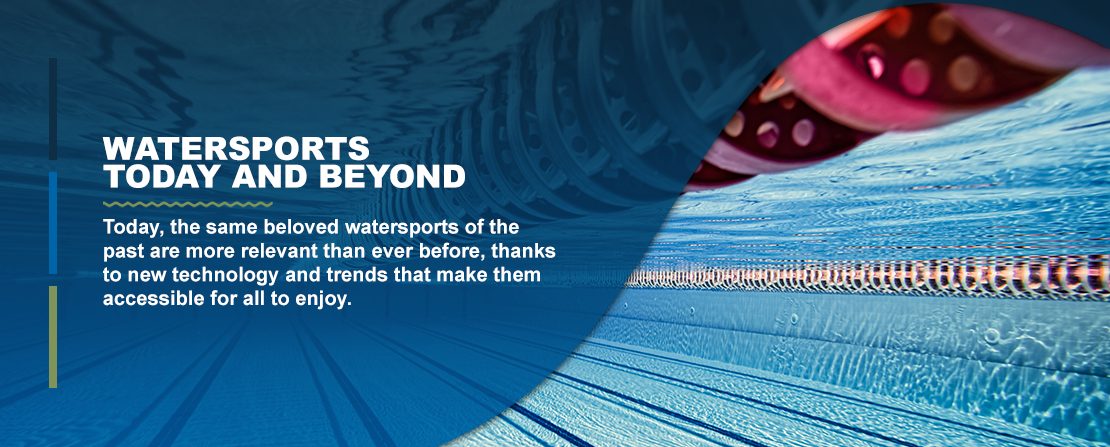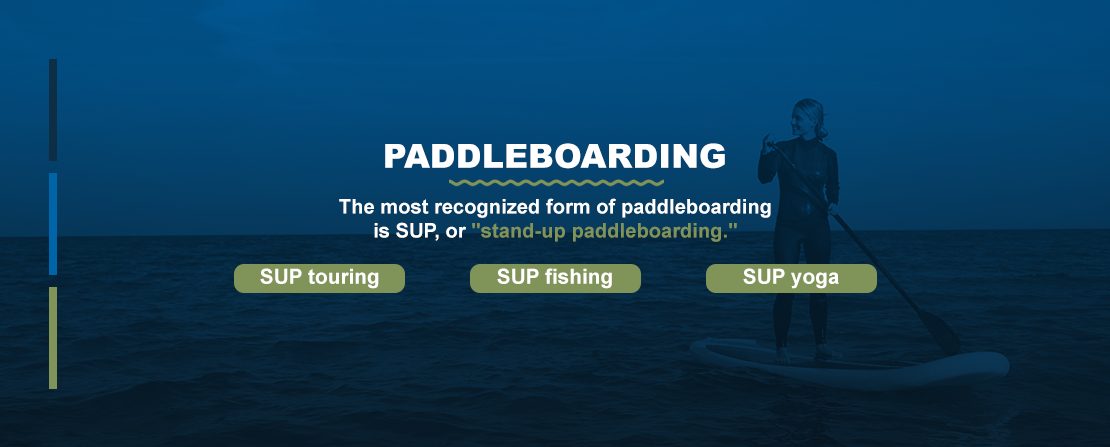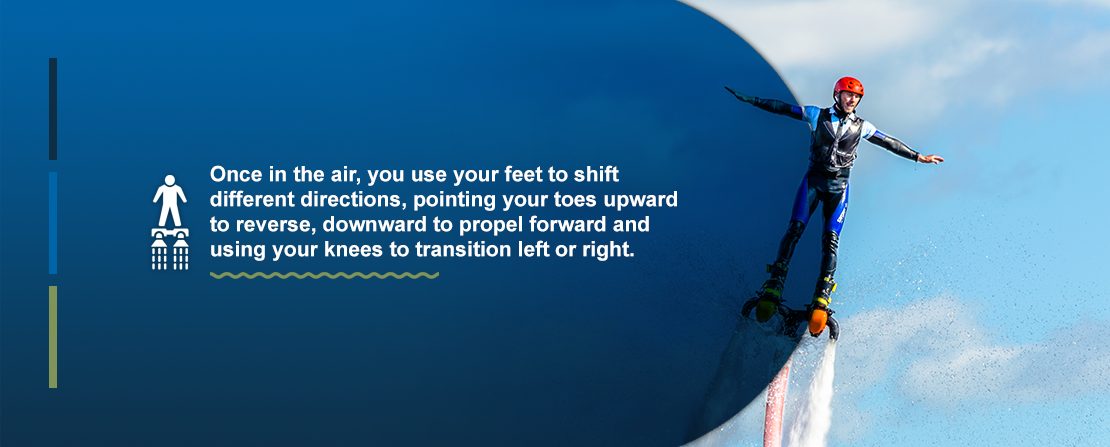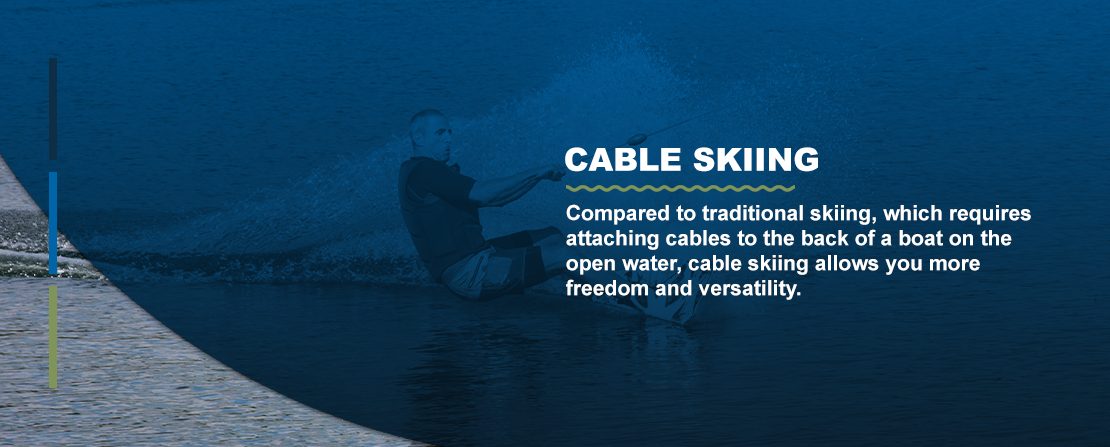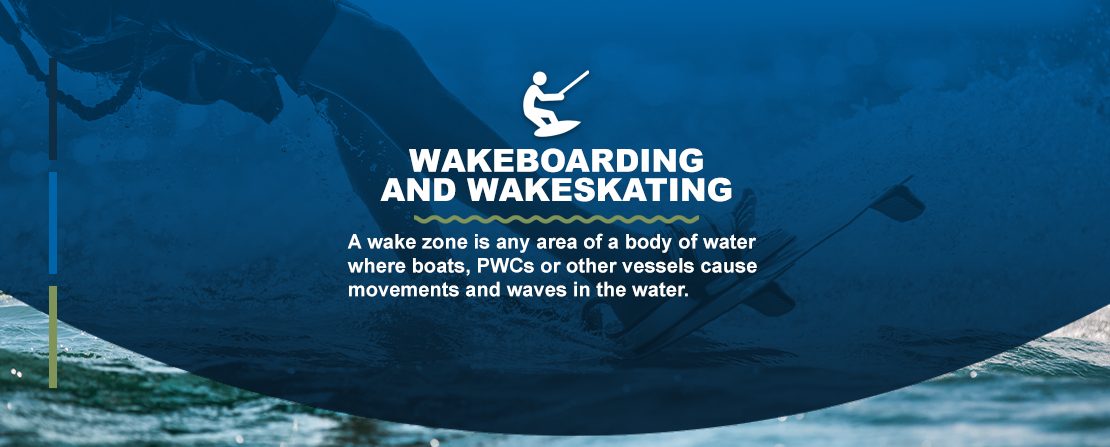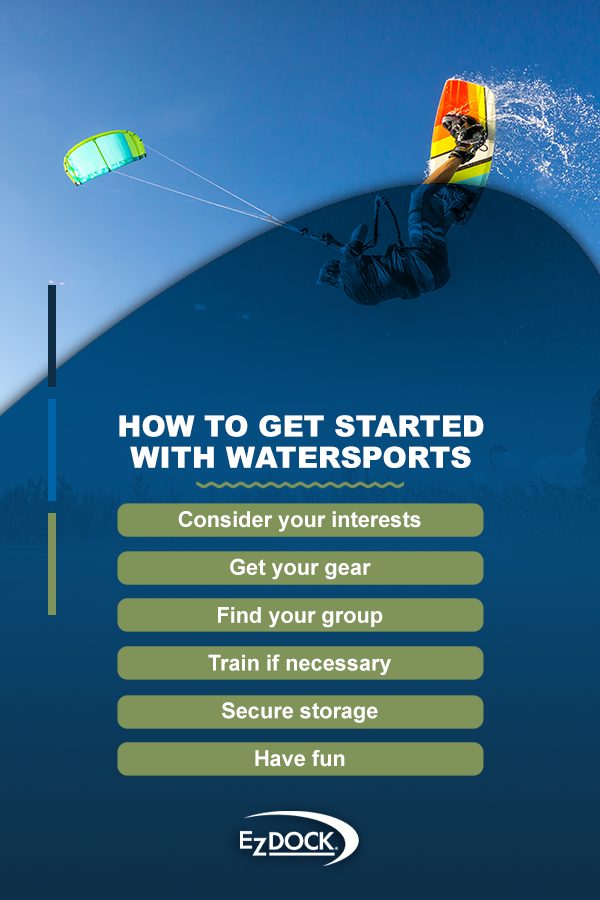Filters
The Future of Watersports
Whether they’re your favorite part of summer vacation or a permanent fixture in your daily life, watersports are an excellent hobby. Consider these benefits.
- They help you stay active: From the upper-body strength needed to paddle a kayak to the balance required for surfing, all watersports involve some exercise. You already know that staying active is essential for your health and well-being, but it’s equally vital to enjoying your workouts. Having an active hobby that you love encourages you to stick with it and continue reaping those rewards while having a good time.
- You’ll be outdoors: Spending time outside does wonders for your mind and body. The more time you spend exploring watersports, the more opportunity you’ll have to soak in the sunlight and give yourself a break from your daily responsibilities. You can do watersports on lakes, oceans, rivers, and ponds, meaning you can participate wherever you are.
- There’s a variety: Whether you prefer relaxing outdoor fun or exciting, adrenaline-fueled excursions, there’s a watersport for every type of person. With so much variety, you can choose to participate in a watersport depending on your mood and interests. Everyone can learn a watersport, and there are several free or low-cost options, making it an easily accessible pastime.
- It’s fun: All other benefits aside, watersports are a lot of fun and a great way to bond with loved ones or meet new people with similar interests.
Read the full article or jump to a specific section:
- How Watersports are Changing
- New Types of Watersports Emerging
- How to Get Started with Watersports
- Benefits of Working with EZ Dock for Your Watersports Needs
How Watersports Are Changing
What activities come to mind when you think of watersports? Surfing? Paddleboarding? Water skiing? Watersports have always existed, and they continue to evolve. Today, new sports combine technology and modern innovation to create truly one-of-a-kind experiences.
Watersports in the Past
Many of the earliest forms of watersports — like swimming, boating, and fishing — have their roots in survival and necessity. People swam and boated for transportation and fished for food. Even diving had mostly scientific purposes before it landed on every thrill-seeker’s vacation bucket list. While these facts remain true, watersports are now mostly recreational.
Examples of traditional watersports include:
- Surfing
- Sailing
- Rowing
- Kayaking
- Canoeing
- Water polo
- Snorkeling
- Diving
- Whitewater rafting
- Swimming
As motorized boats and accessories became more popular and affordable, we got sports like recreational speed boating, jet skiing, and water skiing.
Watersports Today and Beyond
Today, the same beloved watersports of the past are more relevant than ever before, thanks to new technology and trends that make them accessible for all to enjoy. For example, advancements in diving equipment have allowed adventure seekers to stay underwater for longer and reach new depths. Other activities, like kayaking, have seen a natural resurgence as the new generation seeks an affordable, portable way to enjoy the outdoors.
Innovative people have broken some types of watersports into niche categories, like whitewater kayaking, a hybrid of kayaking, and whitewater rafting. Once deemed land-only, many sports have even made their way to the waves, including water basketball and underwater hockey.
The future of watersports will undoubtedly see more growth and improvements, while things like swimming and fishing will remain classic outdoor pastimes. As long as there is a body of water to explore, outdoor enthusiasts will continue seeking new and exciting ways to enjoy it.
New Types of Watersports Emerging
The future of watersport activities looks bright, thanks to recent trends like paddleboarding, flyboarding, skimboarding, cable skiing, eFoiling, wakeskating, and kitesurfing.
Paddleboarding
The most recognized form of paddleboarding is SUP or “stand-up paddleboarding.” In this sport, you stand on top of the paddleboard, maintaining balance while navigating your way through the water. Learning the correct form is crucial for SUP. You should always space your feet hip-width apart — pointed forward — and keep your gaze ahead, while engaging your core to stay upright.
There are several SUP watersport variations.
- SUP Touring: SUP touring is a method of traveling and exploring the water, similar to how you would on a canoe. While all forms of SUP touring require endurance and stamina, some are more intense than others. For instance, SUP racing is often a more athletic, competitive form of touring. SUP touring boards have a long, narrow shape designed to cut through all water conditions and maintain a steady course.
- SUP Fishing: Paddleboards are versatile and flexible, making them an angler’s dream on the water. SUP fishing lets you access areas of the water you can’t reach by boat or shore and has no loud motor to spook away fish. Many anglers also prefer the convenience and portability of a paddleboard over a traditional fishing boat.
- SUP Yoga: Yoga is a great way to work on mindfulness and calming techniques, but it’s also an excellent workout. Many yoga poses can improve your strength, flexibility, and balance, just like paddleboarding. When you combine the two for SUP yoga, you get a challenging workout that will help you stay fit and relieve stress.
Flyboarding
Few watersports look as futuristic and extreme as flyboarding. Compared to a paddleboard, the flyboard has minimal board area. Instead of something long and boat-like, a flyboard’s platform is just large enough to stand on. The rest of the equipment consists of a hose that you connect to a personal watercraft device (PWC) and some boots and a helmet that you secure on yourself. When you’re ready, the flyboard uses the pressurized flow of the PWC’s output stream to power the flyboard and lift it into the air, letting you “fly.”
Once in the air, you use your feet to shift different directions, pointing your toes upward to reverse, downward to propel forward and using your knees to transition left or right. Someone must be operating the PWC for the flyboard to function, and they control your height by adjusting the water output pressure from their unit. A close variant of flyboarding is hoverboarding, which enables a more horizontal movement across the water, rather than the up-and-down nature of the flyboard.
Though there is a learning curve involved if you want to master in-air movement, flyboarding is an exhilarating, unique watersport that you should probably try at least once. Instead of investing in a flyboard right away, consider taking a few guided classes to get more comfortable before taking the plunge.
Skimboarding
Skimboarding is one recent watersport trend that has grown popular enough for professional teams and prestigious competitions — but what is it? You could compare skimboarding to surfing, skateboarding or snowboarding because it requires vertical balance and similar movements, but skimboarding is a sport in its own right. It requires a lot of balance and nerve, especially as a beginner. When you’re new to the sport, expect a few tumbles on the water or sand before you grasp the right stance and movement. Once you’ve got the hang of it, you can try your hand at different tricks and maneuvers.
You can try two types of skimboarding.
- Wave skimming: Wave skimming is the type of skimboarding that most closely resembles surfing. Compared to surfing, skimboarding lets you tackle waves closer to the shore. Instead of waiting in the water for the perfect wave to ride, skimboarders take a running jump into the water with boards in hand, and rock their legs — a movement called “pumping” — to advance forward and stay afloat. Though some may consider wave skimming a safer alternative to surfing because you don’t have to ride as far into the water, you should still practice caution and follow all safety recommendations.
- Flatland skimming: If you’ve ever taken a walk down the shore of a public beach, you may have encountered a flatland skimboarder along the way. This type of skimboarding happens where the sand meets the waves, on the slick, level part of the shore. It’s akin to skateboarding, but with the shallow water’s movement helping propel the rider forward. You can go flatland skimming anywhere you have access to level terrain and shallow water, including puddles, rivers and lakes.
The size and shape of a skimboard vary depending on your preferences, size and type of skimboarding you’re doing. Wave skimboards are usually lightweight foam and fiberglass resin for maximum float. Wave skimboards are either shallow or steeper rockers, with different shapes accommodating various water conditions. Flatland skimboards need to be sturdy enough to withstand your weight pressing against the solid surface of the shore, so they’re wooden, often curved at each end for easier maneuverability.
Cable Skiing
Imagine all the thrills of water skiing or wakeboarding, but with fewer restraints. Instead of attaching your vessel to a boat, cable skiing lets you connect to a series of suspended overhead cables, which extend over an entire body or portion of water. These cables move and rotate, allowing you to jet through the water, just like a boat would.
Compared to traditional skiing, which requires attaching cables to the back of a boat on the open water, cable skiing allows you more freedom and versatility. You don’t have to worry about securing a boat and driver. Instead, you find the nearest wake park, grab your gear and enjoy a day on the water. Plus, cable placement isn’t always feasible or safe over particular bodies of water, so a more controlled environment is ideal. Because the cable attaches overhead, rather than in front of you, you can also use your unique position to master new tricks and reach different heights than you could with traditional skis.
You can go cable skiing or cable wakeboarding at places called wake parks, also known as cable wake parks. Though not yet quite as popular as visiting a ski resort, these wake parks feature safe, secure overhead cabling, so users have an open area designated specifically for them.
eFoiling
eFoiling — or electric hydrofoiling — truly encompasses everything about the future of watersports, thanks to its use of battery-powered hydrofoil boards. If you ever see an eFoil in public, don’t be surprised by its futuristic appearance! eFoils are, in essence, flying surfboards. eFoils use a long hydrofoil unit — a type of vessel-lifting device with a fin — that sits underneath the water, lifting the board above surface level while also providing power. Aside from maintaining balance and navigating, the rider is responsible for generating very little movement once aboard.
Bluetooth-enabled eFoils allow the rider to operate the board via a handheld controller. This precise level of control gives riders a fascinating insight into true on-the-water freedom, allowing you to adjust your speed as you get more comfortable. When you’re above the water, you might forget for a moment that you’re not flying.
eFoils are still a relatively new technology, but new manufacturers continue to pop up as word spreads about this unique watersport activity.
Wakeboarding and Wakeskating
A wake zone is any area of a body of water where boats, PWCs or other vessels cause movements and waves in the water. Of course, these waves have a lot of potential for watersports enthusiasts, especially those who rely on naturally calm freshwater for recreation. Two of the most popular wake-based sports are wakeboarding and wakeskating, which are similar in appearance but vastly different in execution.
Wakeboarding is similar to water skiing and snowboarding. The rider straps themselves into a pair of boots attached to the wakeboard. The wakeboard connects to the back of a boat, allowing the wakeboarder to trail behind. While in motion, the rider can surf, tour or perform tricks and jumps while maintaining their grip on the connecting cable. Wakeboarding has spawned variations, including kneeboarding, which is essentially wakeboarding on your knees rather than your feet.
Wakeskating is wakeboarding’s more rebellious twin. Instead of strapping yourself to your wakeboard, riders rely on a gripping tape on the bottom of the board to maintain traction when wet. It’s so similar to skateboarding that advanced and professional riders even wear specific skateboard-esque shoes designed for wakeboarders. The lack of binding gives the rider all the space and freedom necessary to do flips, spins and other tricks. Wakeskate boards vary based on rider weight and experience level. The shorter the board, the easier it is to handle.
Kitesurfing
Kitesurfing, also called kiteboarding, follows similar principles as wakeboarding, water skiing and cable waking, but through air and wind power. Boards attach to a large, sail-like kite, which propels riders forward in the wind. Handlebars allow you to do aerial tricks and flips without falling into the water or losing the kite. Unlike windsurfing, the rider stays connected to both the kite and board, so there is also less pressure to stay balanced and maintain your grip at all times.
Like all watersports, there are different subcategories of kitesurfing, including:
- Freestyle
- Competitive
- Course riding
- Wake park riding
- Landboarding
Kitesurfing’s fun and colorful nature also makes it an enjoyable spectator sport for onshore viewers.
How to Get Started With Watersports
If you’re ready to break into the world of watersports, here’s how.
- Consider your interests: Not sure where to begin? Consider your interests. If you like hunting, for instance, you might enjoy recreational fishing. If you’re an animal lover, you’ll probably enjoy snorkeling. If lazy days on the water are more your style, look into sailing or kayaking. Of course, the opposite approach might also work — consider the hobbies you already engage in, then try a watersport that’s outside your norm. Whenever possible, continue trying new activities until you find the ones you love.
- Get your gear: Now, it’s time to gather your gear. Necessary equipment varies by activity, so be sure to research your watersport before you jump in. Most watersports have a list of must-have items, plus add-ons that will make your experience more enjoyable. For example, swimsuits are necessary for swimming, but goggles, swim platforms and water fins make it easier. Please note, if your goal is to engage in a competitive watersport, you will likely need more equipment than you would if participating for recreation only.
- Find your group: This step is optional — you can enjoy plenty of watersports by yourself. However, starting a new hobby is a great way to meet others, and some activities are even more fun when with a partner or group. To find people with similar interests, ask a friend to join you in your new endeavor, find a beginner’s class near you or join a local club.
- Train if necessary: Some sports are easy to dive right into, but others might be a bit more challenging. If you’re interested in surfing, for instance, formal lessons will help you master the basics you need to know to stay safe.
- Secure storage: Avoid purchasing watersports equipment before you know where you’ll store it when not in use. Some equipment, like fishing gear, wakeboards and swimming, don’t consume too much space. Others, like boating, canoeing and water skiing, require more space.
- Have fun: Now that you have your gear, storage, group and training in place, all you have left to do is enjoy the ride! Continue practicing and trying new things, and you’re sure to enjoy your new hobby for years to come.
Benefits of Working With EZ Dock for Your Watersports Needs
EZ Dock has everything you need for an on-the-water adventure. From boat ports to EZ Launch® Residentials, here are the benefits of choosing EZ Dock products for your dock or waterfront property.
- Quality: EZ Dock floating docks, launches and ports consist of durable, slip-resistant polyethylene that never splinters or overheats like wood and aluminum docks do. Our environmentally conscious recycled rubber couplers keep floating docks sturdy during waves. Floating docks can even withstand tropical storms and some hurricane conditions.
- Options: EZ Dock has an extensive inventory of floating dock sections and related accessories, including PWC ports, the EZ BoatPort, EZ Launch® Residentials, anchoring systems, gangways and dock accessories like slides, swim platforms and fish cleaning stations. Mix and match your pieces to create the ideal configuration for your waterfront property, including plenty of ports and launches for all your watersport activities. Even better, all our dock accessories and add-ons are all the same quality materials for easy maintenance and longevity.
- Convenience: EZ Dock floating docks are modular, making them easy to configure, relocate and expand whenever you need a change. You can pair them with an existing dock or create a layout from scratch. The construction materials make each dock virtually maintenance-free, free of fading or rust.
Shop EZ Dock for the Best in Watersports
With the development of so many new and exciting watersport activities, it’s safe to predict some trends will continue. Water enthusiasts will find new and inventive ways to harness technology and physics to create unique experiences, while traditional sports, like swimming and boating, will remain as popular as ever.
If you’re a fellow watersports enthusiast, EZ Dock has the launch, port and docking systems you need to keep your equipment secure and ready to use.

